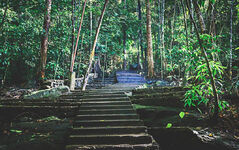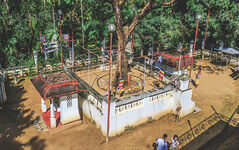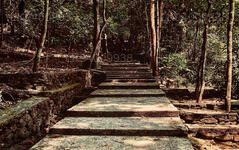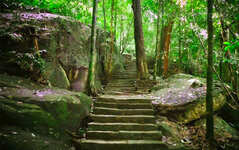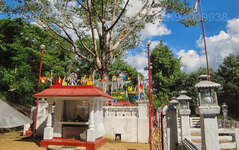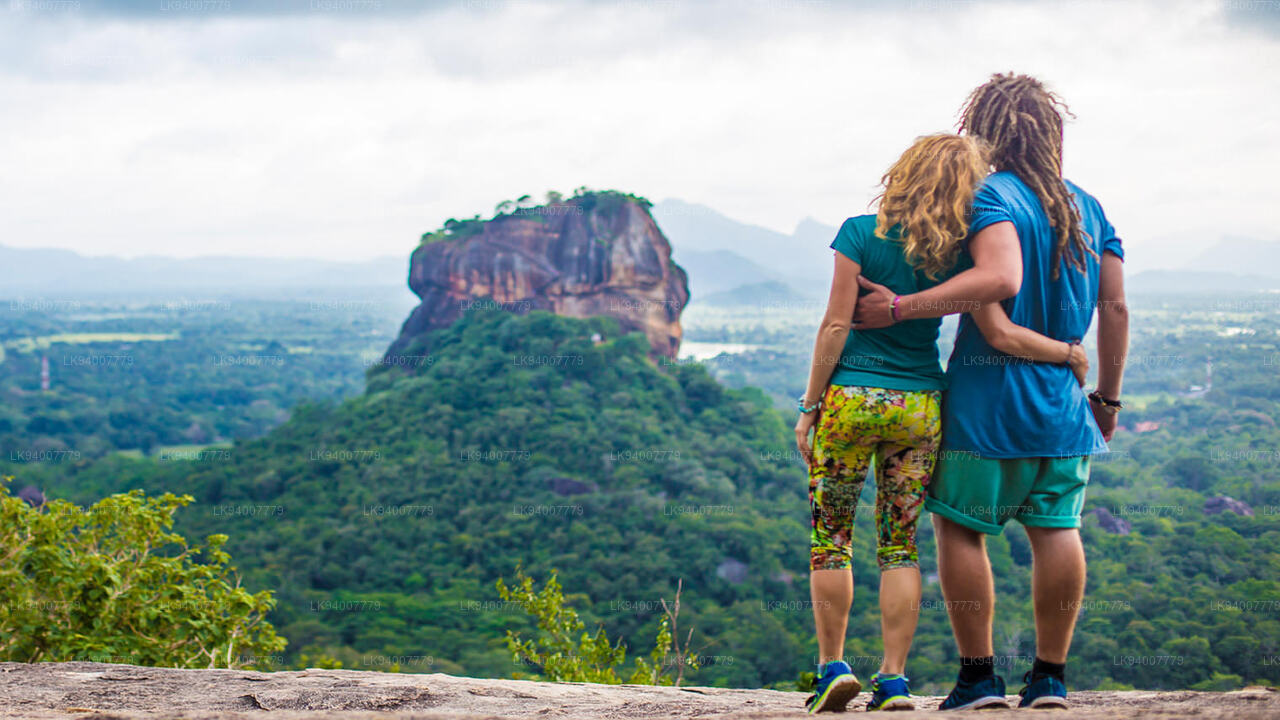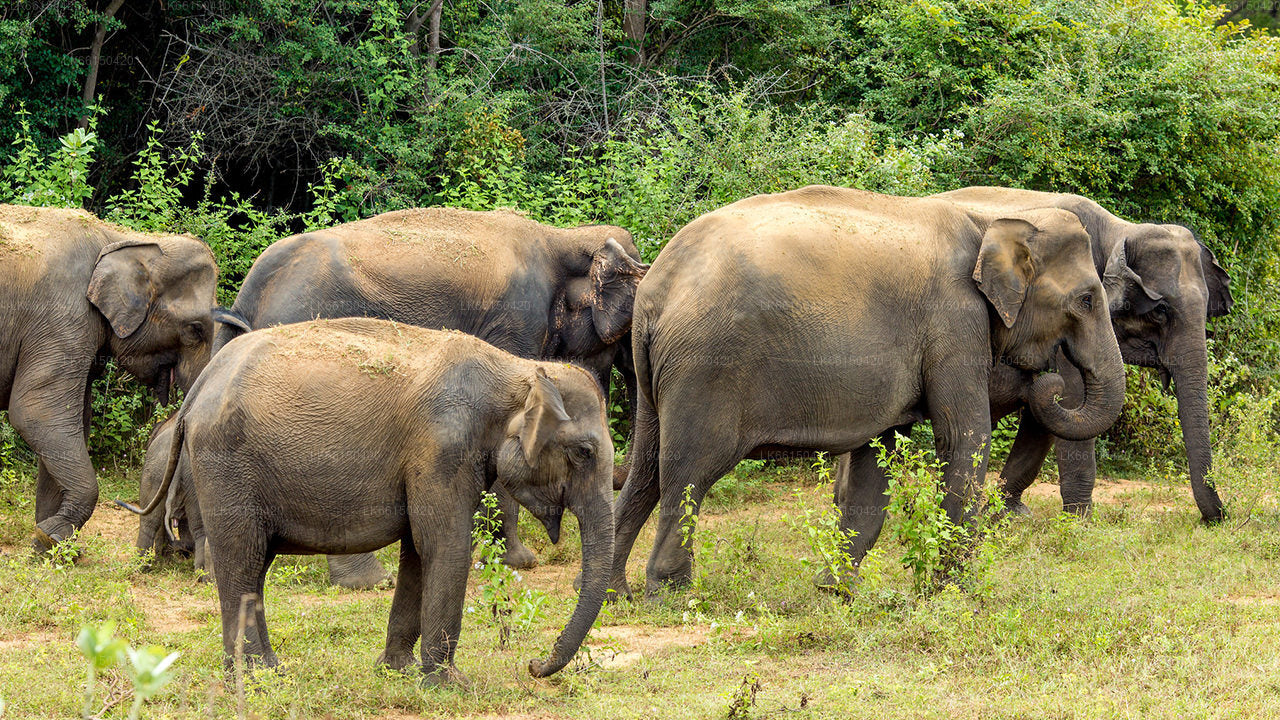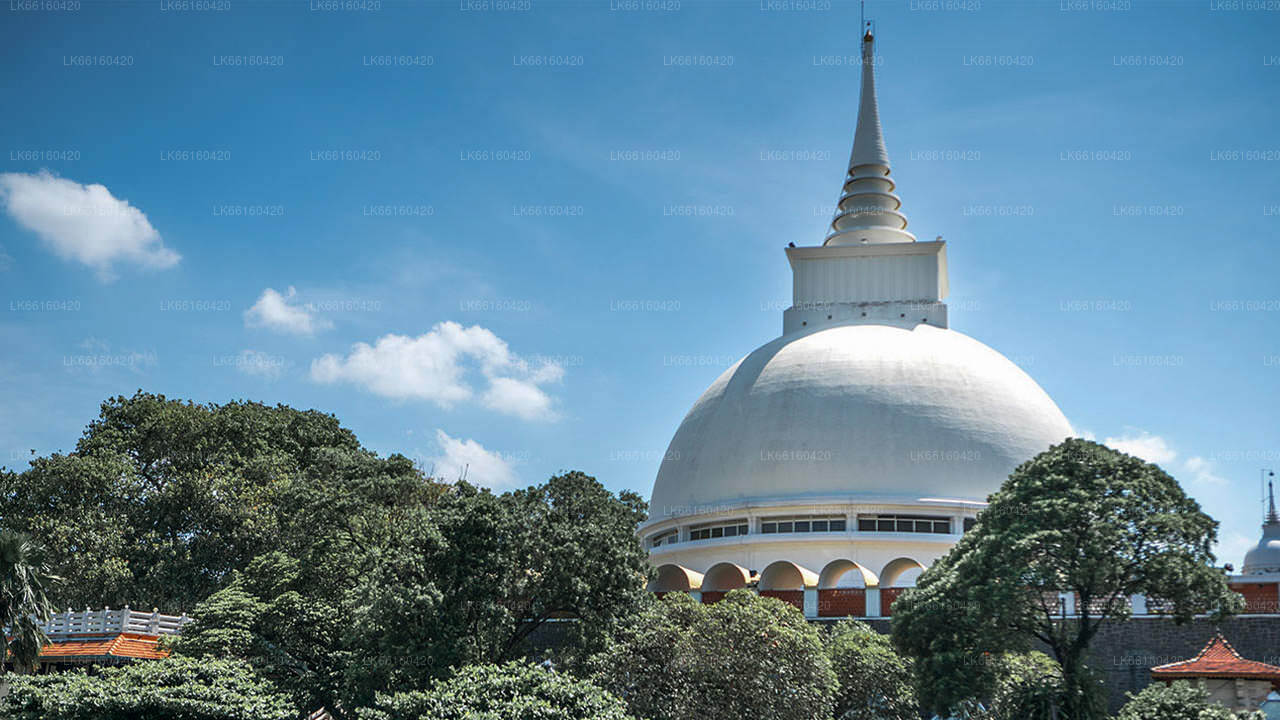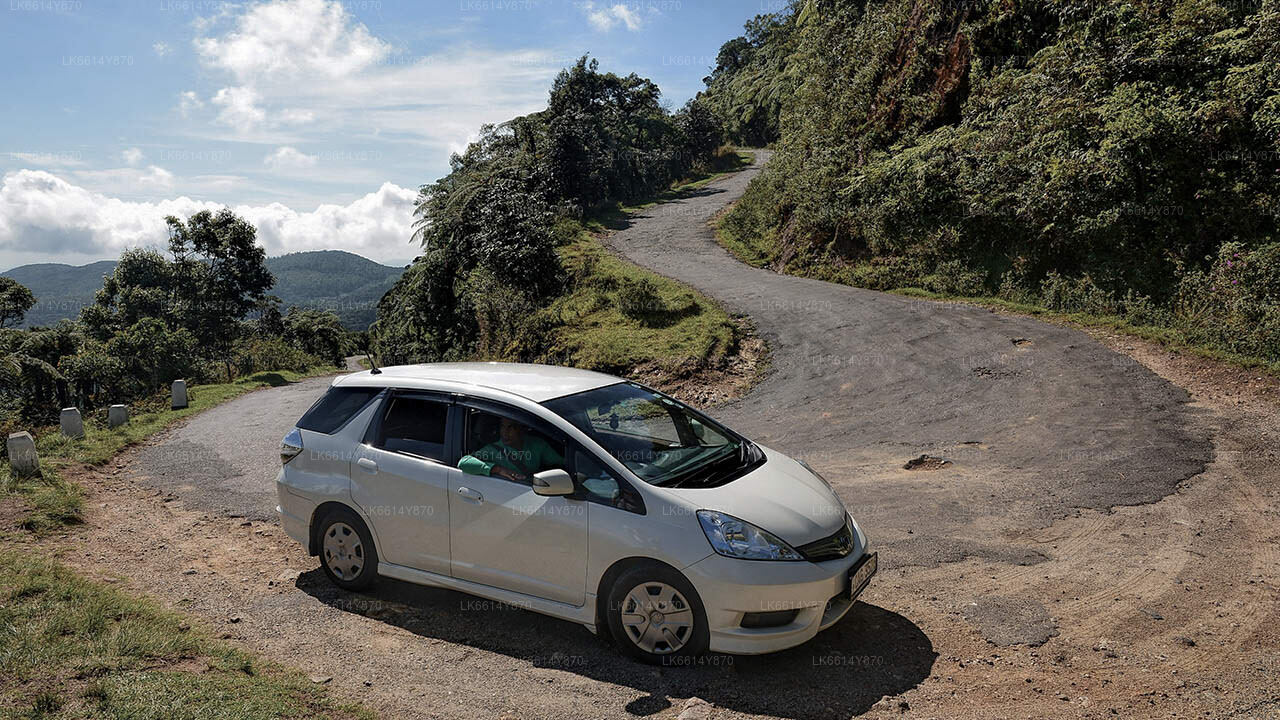
Città di Kalutara
Kalutara è una città costiera nello Sri Lanka occidentale, nota per le sue spiagge tranquille e i siti storici. L'iconico Kalutara Bodhiya, uno stupa buddista sacro, e il Castello di Richmond, una dimora coloniale, sono attrazioni di spicco. La città coniuga ricchezza culturale e bellezze naturali.
Bodhinagala Forest Hermitage
Bodhinagala Forest Hermitage in Sri Lanka: A Place of Serenity
The hermitage in Dombagaskanda also known as the Bodhinagala Forest Hermitage in Sri Lanka, nestling on the bank of the Kalu Ganga near the Dombagaskanda hill in the outskirts of Ingiriya in the Kalutara district, lies beneath the leafy canopy of a wet zone rain forest reservation of some 347 hectares. The natural rain forest shields the hermitage from the hustle and bustle of the outside world, providing a serene environment for the meditating monks.
To reach the Bodhinagala forest hermitage, one has to travel on the Panadura-Ratnapura (A-8) highway and travel 1.5 km along the minor road which leads to the Kalu Ganga. Before coming to the river, the road branches off to the left and continues for another 1.1 km, and comes to an area where it reaches the foot of Dombagaskanda. Although the road up the hill is accessible by vehicle, it’s better to get off one’s vehicle at this point and walk through the forest.
Positioned at the heart of the forest is a hermitage which has been there from way back in time, from the early 1950s. This is the closest tropical rain forest that can be reached from the main city of Colombo. The Bodhinagala Forest is conserved for this very reason and was once 407 hectares of pristine jungle.
An amazing patch of wilderness complete with gentle slopes, crafting ridges and peaks, with the highest peak rising to 186 meters above mean sea level, the forest reserve is bordered by the Kalu river from the south, Ingiriya Ela from the east, paddy fields from the north and the road leading from the main road to the Bodhinagala Monastery from the west.
Bodhinagala Forest Hermitage in Sri Lanka: The surrounding Wildlife
Just walking down the main trail gives any visitor an idea of the rich biodiversity that’s trapped in this heaven. An endemic Grey Hornbill or two greeting you at the entrance is but a common encounter here. From the familiar high pitched whistle of the Hill Mynahs, and the Rose Ringed Parakeets, to the chirpy
chit chats of the colorful little Hanging Parakeet, to an endless chirping of the crickets, with the company of a leech or two, all become part of an experience in the tropical jungles of Sri Lanka. Activities of the vibrant plumed Black Naped Monarch, Tickles Blue Flycatchers, and the flocks of Scaly
Breasted Munias keep the forest alive.
Other birds that could be heard included Yellow-browed Bulbul, Green Imperial-pigeon, Oriental Dwarf Kingfisher, etc. Both the endemic Toque and Purple-faced Leaf Monkeys could also be seen.
Bodhinagala Forest Hermitage in Sri Lanka: The History
The history of the Bodhinagala Forest Hermitage in Sri Lanka goes back to the early 1950s. Ven. Olaboduwe Sri Revatha Dhamma Kitti Thera, the principal of the Dharmadeepa Vipassana Piriwana in Kaluwamodara in Aluthgama was the founder of the hermitage. He came to Ingiriya to observe Vas on
the invitation of devotees in the Raigam Korale.
He stayed in a makeshift hut at a cemetery close to the Ingiriya hospital with seven bhikkhus. More people thronged Ingiriya to listen to the Dhamma Desana and meditation practices conducted by the Ven. Thera. After the Vas season was over, the bhikkhus prepared to go back, but the devotees persuaded them to stay permanently.
Ven. Olaboduwe Sri Revatha Thera, with the help of a few villagers, visited the thick forest of Dombagaskanda and at first, sight realized it was ideal for a forest hermitage. The villagers and devotees in the Raigam Korale have constructed the Kurtis and other buildings in the Dombagaskanda forest and on June 4, 1955, the complete hermitage of Bodhinagala was offered to the Sangha.
In the beginning, 12 bhikkhus lived in the small Kuti in five acres of forest. Later, it was expanded to 50 acres during the time of the late M.D.H. Jayawardena, the then MP for Horana. Today, this hermitage has numerous constructions including Kuti, meditative pathways, and medical halls, linked together and developed as a reputed forest hermitage in the country.
Bodhinagala Forest Hermitage in Sri Lanka: Features of the Hermitage
An interesting feature about the monastery is the Gaudiya, the short tree trunk is used as a bell. When beaten with a stick, it emanates a large sound. It’s hung on a tree and is sounded around 10.00 am every day to call the monks of the hermitage to the main Dana Salawa from where they go on Pindapatha.
While about 12 bhikkhus permanently reside at the hermitages, foreign bhikkhus also come for short periods to practice meditation. They live and meditate in the small Kuti in the hermitage, having left all their wealth and loved ones. To avoid disturbing the bhikkhus, visitors are allowed into the area of the
Kuti only from 12 noon to 1.00 pm.
Under the guidance of the Viharadhipathi, the Bodhinagala Forest Hermitage Trust has undertaken the construction of a Chaitya to fill a long-standing need. Construction has already begun with the assistance of devotees and philanthropists. The project is estimated to cost Rs. 8.5 million.
Informazioni sul distretto di Kalutara
Kalutara si trova a circa 42 km a sud di Colombo. Un tempo centro di commercio di spezie, Kalutara fu controllata da portoghesi, olandesi e britannici. La città è famosa per i cesti e le stuoie di bambù di qualità e per i mangostani più deliziosi.
Il ponte Kalutara, lungo 38 metri, fu costruito alla foce del fiume Kalu Ganga e funge da importante collegamento tra il confine occidentale e quello meridionale del paese. All'estremità meridionale del ponte si trova il Kalutara Vihara, un tempio buddista alto 3 piani costruito negli anni '60 che ha la particolarità di essere l'unico stupa al mondo cavo.
Informazioni sulla provincia occidentale
La Provincia Occidentale è la provincia più densamente popolata dello Sri Lanka. Ospita la capitale legislativa Sri Jayawardenapura e Colombo, il centro amministrativo e commerciale della nazione. La Provincia Occidentale è divisa in 3 distretti principali chiamati Colombo (642 km²), Gampaha (1.386,6 km²) e Kalutara (1.606 km²). Essendo il fulcro economico dello Sri Lanka, tutte le principali aziende locali e internazionali hanno la loro presenza in città, così come tutti i principali stilisti e negozi al dettaglio, quindi preparatevi a concedervi un po' di shopping nella Provincia Occidentale.
Avendo la popolazione più alta di tutte le province, quasi tutti i principali istituti scolastici dell'isola si trovano nella provincia occidentale. Le università della provincia includono l'Università di Colombo, l'Università di Sri Jayewardenepura, l'Università di Kelaniya, l'Università Aperta dello Sri Lanka, l'Università Buddista e Pali dello Sri Lanka, l'Università della Difesa Generale Sir John Kotelawala e l'Università di Moratuwa. La provincia occidentale ha il maggior numero di scuole del paese, che comprende scuole nazionali, provinciali, private e internazionali.

